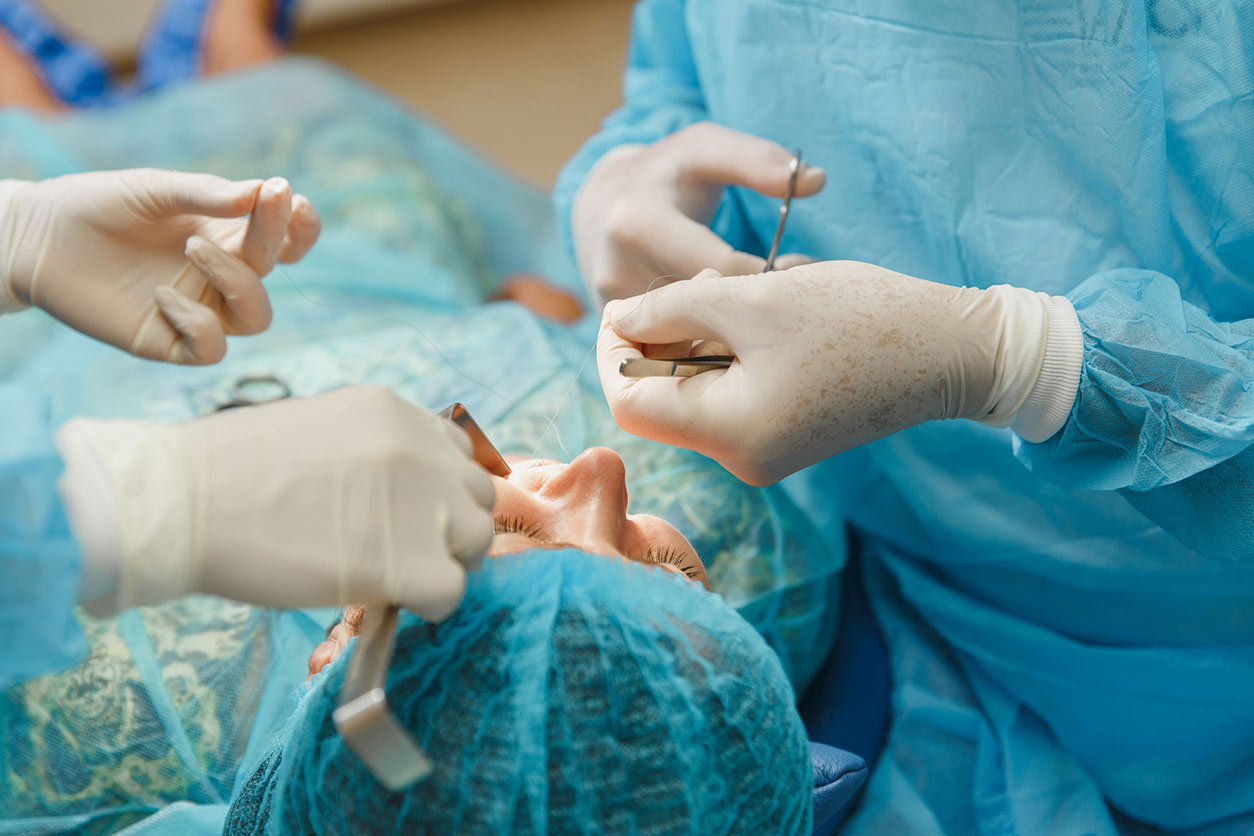
Most popular dental surgery operations
Bone grafting and regeneration
In some cases, it is not possible to place a dental implant directly due to bone insufficiency.
A pre-implant (before implant placement) or per-implant (at the same time as implant placement) bone graft must then be performed.
When should a bone graft be performed?
Around the dental implant (screw form) there must be enough bone to anchor it firmly in the jaw. Unfortunately, sometimes the jawbone is insufficient to ensure the correct placement of the implant.
This is why it is sometimes necessary to proceed with a bone reconstruction in height and/or thickness. The technical solutions that can be applied to compensate for the lack of bone are different depending on the nature of the lack (height and/or thickness) and its location in the oral cavity (upper or lower jaw, anterior or posterior sector).
When bone failure is significant, the reconstruction procedure must precede implant placement. A waiting period of 4 to 6 months is then necessary before implant placement.
When the bone insufficiency is moderate, reconstruction and implant placement can be performed at the same time.
Is there an alternative to bone grafts?
In some cases, very short and/or very narrow implants may be used to avoid bone grafts. Recent technological advances have made it possible to design small implants that are both reliable and strong: there are now ultra-short (4 mm long) and ultra-thin (3 mm diameter) implants.
Sinus floor elevation
The sinus is a hollow cavity located above the premolars and maxillary molars. When the teeth in this area are no longer present, there may not be enough bone height to place implants due to the presence of the sinus. It is then necessary to raise the sinus floor, the procedure is also called a sinus lift.
The principle of the intervention is based on the elevation of the sinus membrane (thin mucous membrane lining the sinus) in order to gain bone height, which will then allow the placement of an implant.
There are two methods of sinus floor elevation depending on the need for bone height :
- Lateral access: bone requirement greater than 4 mm
- Vertical access: bone requirement less than 4mm


